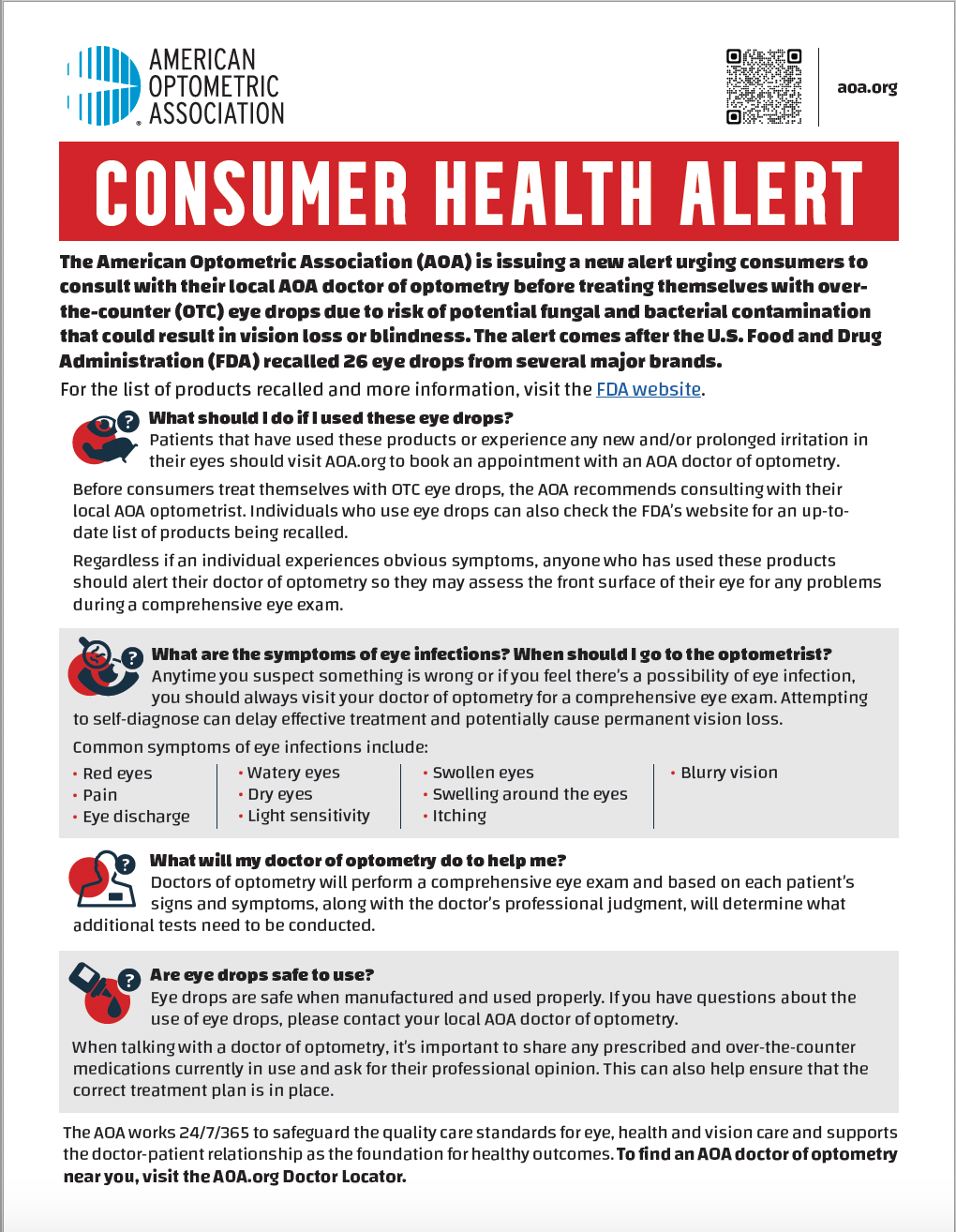
AOA releases statement regarding FDA eye drop recall
The FDA recalled 26 eye drops due to risk of infection and possible vision loss.
Following an
Patients who have used any products on the list or those who experience any new or prolonged eye irritation should schedule an appointment with a local optometrist. Optometrists should do their part to ask patients who present with irritation if they have used any of the listed eye drops. The AOA recommends that all consumers who have purchased the listed eye drops
While eye drops are safe when manufactured properly and instilled with care, there has been an uptick in contaminated eye drops over the last year. To combat this, the AOA recommends patients consult with an optometrist prior to purchase of eye drops. Optometrists should counsel patients on appropriate drop purchase and an appropriate treatment plan. During the consultation, optometrists and patients should discuss prescribed and over-the-counter medications being used to avoid contraindication and health complications.
In the interest of public health, eye care providers and patients alike are encouraged to report adverse events or quality problems to the FDA via the
Optometrists who believe their patients may have purchased any of the 26 recalled eye drops may distribute this infographic created by the AOA.
Newsletter
Want more insights like this? Subscribe to Optometry Times and get clinical pearls and practice tips delivered straight to your inbox.

















































.png)


